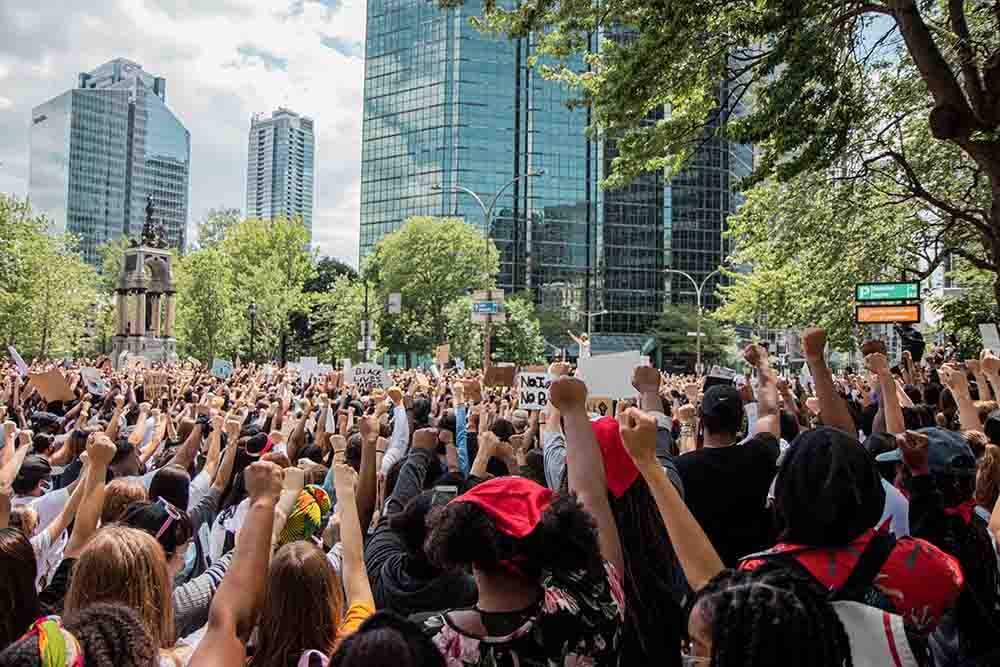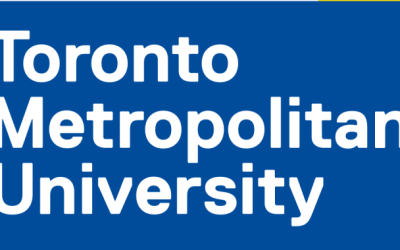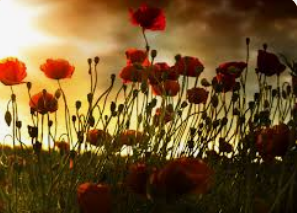While activists and protesters celebrate the destruction of Sir John A. Macdonald’s statue in Montreal, they probably don’t want to be reminded that in neighbouring Ontario there stands another statue, one that has thus far escaped the wrath of Black and Indigenous Lives Matter activists.
Victoria Park in Brantford, Ontario features a grand statue commemorating the life of Mohawk leader Joseph Brant (Thayendanegea). To mark the statue’s unveiling in 1886, celebrated Indigenous Canadian poet E. Pauline Johnson wrote:
“Then meet we as one common brotherhood
In peace and love, with purpose understood
To lift a lasting tribute to the name
Of Brant, who linked his own with Britain’s fame.”
And in the same poem:
“Today the Six Red Nations have their Canada.
And rest we here, no cause for us to rise
To seek protection under other skies.
Encircling us an arm both true and brave
Extends from far across the great salt wave.
Tho’ but a woman’s arm, ’tis firm, and strong
Enough to guard us from all fear of wrong,
An arm on which all British subjects lean —
The loving hand of England’s noble Queen.”
By these words, we can presume Johnson clearly believed in the value of Brant’s legacy and the essential role of colonization for Canada’s future.
Yet a year previous, in 1885, she wrote in “A Cry From an Indian Wife”:
“Go forth, nor bend to greed of white men’s hands,
By right, by birth we Indians own these lands,
Though starved, crushed, plundered, lies our nation low …
Perhaps the white man’s God has willed it so.””
The chronology of these writings leaves us bewildered about where Johnson really stood.
And today, we live in bewildering times indeed.
Memorials are being vandalized, torn down, or re-named all across our country, colonialism and colonists being named the villains. Among them: Queen Victoria, British Columbia chief judge Sir Matthew Baillie Begbie, Egerton Ryerson, James McGill, Hector-Louis Langevin, Samuel Champlain, Sir John A. Macdonald, Edward Cornwallis, Sir Garnet Wolseley, Henry Dundas, to name a few. These historical figures are today either condemned, or are about to be, by the desecration of their memorials or the renaming of streets, parks, bridges, buildings, and universities.
All the while, there is little or no criticism of Liberal Prime Minister Alexander Mackenzie and every other prime minister after him – prior to Paul Martin – who presided over Indian residential schools (the last one closed in 1996). Indeed, Mackenzie’s government enacted the Indian Act, for which Macdonald seems to carry all the blame.
More about Joseph Brant, for whom Brantford, Ontario is named, as is the Joseph Brant Hospital in Burlington, Ontario. Dedicated by Governor General Michaëlle Jean as recently as 2006, Brant is commemorated as one of 14 Canadians designated “hero” at the Valiants Military Memorial in Ottawa. (Nine of the heroes are memorialized with busts – only five, including Brant, with statues.)
Brant led the nations of the Iroquois League in assisting the British against the rebels in the struggle that was the American Revolutionary War. Canada’s future interests were at stake and, in this respect, Brant’s contribution to British – later, Canadian – military history, and colonization, ought never to be minimized or forgotten. All Canadians should be happy to have Brant memorialized. In the same way, the contributions of those other early leaders whose memorials are now so indecently vandalized should also be remembered and appreciated.
But there is an inconvenient truth. The elephant in the room is that Brant owned more than 30 black slaves, brought with him from Mohawk Territory in New York to the Burlington area of Ontario.
What irony: Michaëlle Jean, a refugee from Haiti to Canada and a descendant of African slaves, commemorating a slave owner by naming him a hero.
Black slaves owned by an Indigenous Canadian: where is the outrage?
If there is any, I do hope the rage is not taken out on Brant’s proper honourable place in Canadian history, nor on his numerous memorials.
But the hypocrisy is embarrassingly evident.
The blackface painting of former Prime Minister Pierre Trudeau’s statue in Vaughan, Ontario last June is investigated as a hate crime, but none of the other acts of vandalism are given the same treatment. Or, apparently, any treatment at all. Some people find this very confusing.
But we should hope the current habit of spitting on our history will end soon. If this is how some people think reconciliation can happen, or that real and positive change can result, law-abiding Canadians want no part of it.
Anger about injustice is one thing, and it’s understandable; hatred and criminality are quite another.
James C. McCrae, Brandon, Manitoba resident and former attorney-general of Manitoba.
Photo by Ying Ge on Unsplash.



